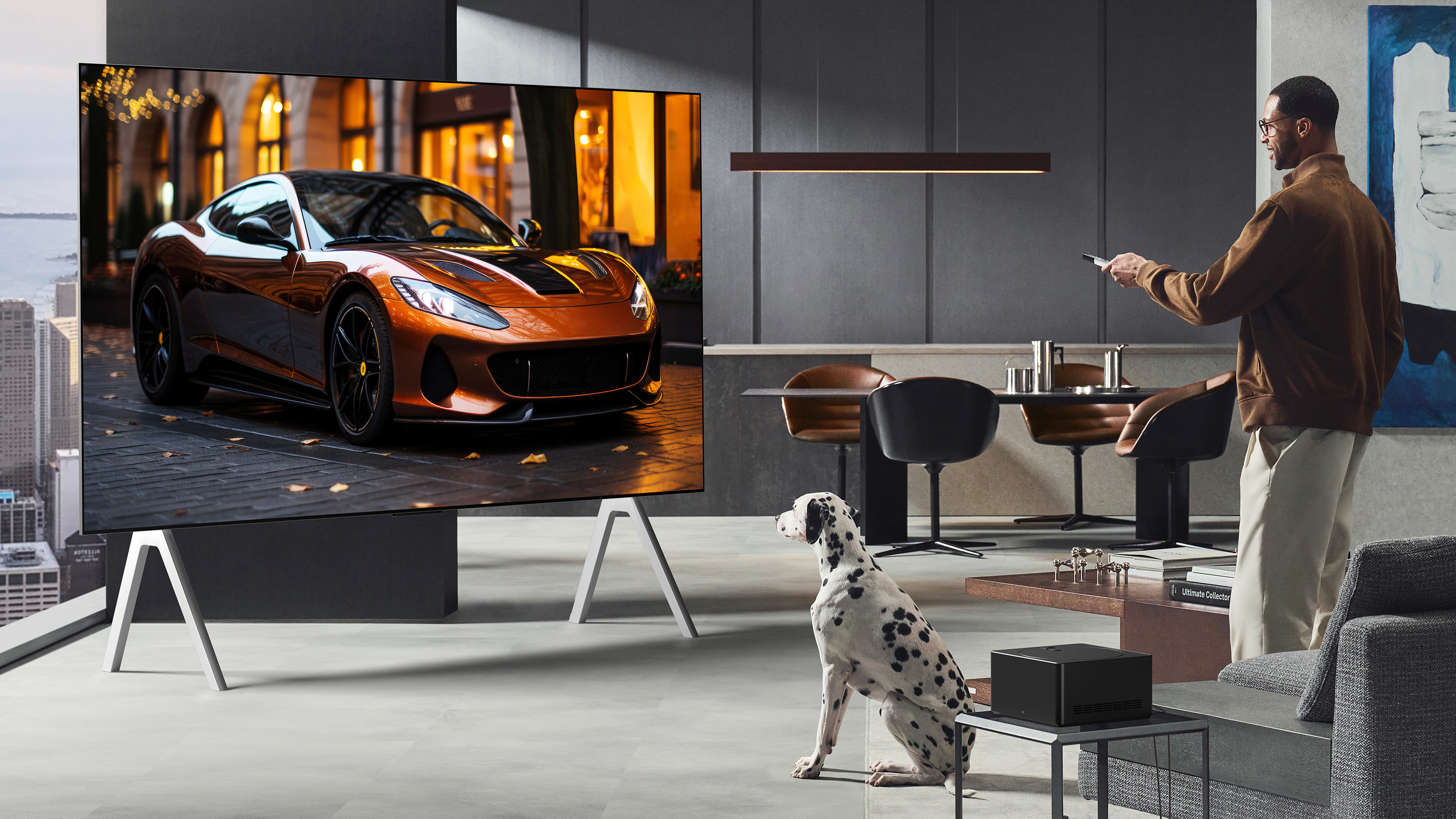LG G5 and M5 OLED TVs unveiled at CES 2025: brighter, faster and lots of AI upgrades
LG kicks off CES 2025 in style

The start of the new year always coincides with a new year of TVs. And, if you're excited about new OLED TVs, take note: LG just announced new models here at CES 2025.
LG makes some of the best OLED TVs you can buy, and they've been wildly popular for some time now. In addition to new models with updated specs, LG also announced AI-based features that seek to improve picture, audio and the overall user experience.
LG is officially unveiling the LG G5 OLED, the C5 OLED and M5 OLED along with lots of AI upgrades, Here's what we know so far.
Note: This article was updated to reflect the confirmation of the LG C5 OLED evo TV and size availability.
@tomsguide ♬ original sound - Tom’s Guide
LG G5 OLED evo TV
For most people, the LG G5 will be seen as the crown jewel of LG's 2025 OLED lineup. It's a follow-up to one of the best TVs of 2024, the LG G4. The G5 will be available in the following sizes: 48, 55, 65, 77, 83 and 97 inches. Every model is designed for wall-mounting, and unlike last year, none of them will come with a stand in the box (though you will be able to buy one separately).
Last year, the G4's success had a lot to do with LG's Micro Lens Array (MLA) technology, which allowed for some of the brightest HDR highlights we've measured on an OLED TV. This year, LG has ditched MLA altogether, while still claiming a brighter picture than last year.
I saw the G5 in person, and I can safely say that, to my eye, its specular highlights are at least as bright as the G4's. Needless to say, I'm eager to get my hands on it for testing.
Sign up to get the BEST of Tom's Guide direct to your inbox.
Get instant access to breaking news, the hottest reviews, great deals and helpful tips.

The G5's flashiest upgrade comes in the form of its native refresh rate, which is up to 165Hz this year. Since 4K console games are still holding steady at 120Hz, the appeal is limited to a narrow slice of gamers. Nevertheless, the appeal is real. As it was with the G4, Variable Refresh Rate (VRR), FreeSync Premium and G-Sync compatibility are along for the ride, too.
The G5 taps the second generation of LG's Alpha 11 AI Processor, and many of its newest performance- and software-related enhancements are said to leverage AI. For instance, LG claims that deep learning algorithms help to clean up low-resolution images, while new search and chatbot functionalities (called AI Search and AI Chatbot) make use of Large Language Models. I'm eager to see if these new features have an impact on viewing.
In addition, the new LG G5 OLED (and the rest of LG's OLED evo lineup) offer users a way to personalize the visual and audio to their own tastes using the AI Picture/Sound Wizard.
LG M5 OLED evo TV
I mentioned that most people would probably consider the G5 as LG's top-tier flagship OLED for 2025, but the M5 might fill that role for folks willing to splash out on its futuristic approach.
The M5 is in its own class.
What's so special about it? Well, the M5 is essentially a G5 with wireless connectivity. It's a successor to the 2024 LG M4, which was built around the same magic trick.
All of the TV's inputs are located on a separate box (dubbed the Zero Connect Box on the LG M4) which then wirelessly transmits audio and video to the M5's OLED display. We haven't had hands-on time with the M5 yet, but the M4's Zero Connect Box worked within a 10-meter range. The M4 launched with an MLA-equipped OLED panel, but like the G Series, this year's M5 does not make use of MLA technology.
Some gamers might feel more comfortable settling for the G5 and its 165Hz refresh rate (the M5 is 144Hz), but the M5 is just as capable outside of that, boasting VRR, FreeSync and G-Sync compatibility.
It's built around the Gen2 Alpha 11 processor, too, so it makes use of the same AI-based features as the G5. This includes the aforementioned AI Search and AI Voice ID, which recognizes viewer voices and switches user profiles accordingly.
The G5 will almost certainly be the less expensive model, but for shoppers looking for a pricey, head-turning TV that showcases bleeding-edge technology, the M5 is in its own class.
LG C5 OLED evo TV
The LG C5 is shaping up to be a light refresh of last year's C4 OLED, but given the excellent performance and features set of the C4, consider this good news. It'll be available in 42-, 48-, 55-, 65-, 77- and 83-inch models.
Like last year, the 83-inch, 48- and 42-inch versions of the C5 will not feature the same brightness-boosting enhancements as the middle three models.
The design of the TV is largely the same, too, with a unique-looking surface on the back of the panel that resembles marble and a wedge-shaped pedestal stand. It's built around LG's Gen8 Alpha 9 processor.
What else is new with LG OLEDs in 2025?
More AI features
AI was on the mind of everyone I spoke to from LG. In addition to the aforementioned AI Chatbot and AI Search, LG is hoping that viewers will appreciate AI-based picture and audio adjustments, which can be assigned to individual profiles within webOS. In practice, if someone activates a voice command, the TV will recognize the speaker's voice and access that user's profile.
Filmmaker mode with Ambient Light Compensation
All of LG's 2025 OLED evo TVs offer a new way to experience the brand's excellent Filmmaker mode.
This picture mode already seeks to deliver content accurately and as the creator intended. LG has introduced something it's calling Ambient Light Compensation, which adjusts the picture based on the room's lighting conditions.
I'm interested to see if this feature can operate in a restrained enough manner so as not to blunt the impact of HDR content. Most TVs already arrive with some sort of energy-saving light sensor enabled by default, and most of the time this feature operates globally, regardless of which picture mode you choose. Due to the negative impact it often has on cinematic content, I typically recommend disabling it.
A Filmmaker-specific version of the feature could work, but it would need to maintain the bright, colorful pop of the picture that makes HDR worthwhile to begin with.
Check out our CES 2025 hub for all the latest news from the show as it happens. Follow the Tom’s Guide team in Las Vegas as we cover everything AI, as well as the best new TVs, laptops, fitness gear, wearables and smart home gadgets at the show.
And be sure to check out the Tom's Guide TikTok channel for all the newest videos from CES!
More From Tom's Guide

Michael Desjardin is a Senior Editor for TVs at Tom's Guide. He's been testing and tinkering with TVs professionally for over a decade, previously for Reviewed and USA Today. Michael graduated from Emerson College where he studied media production and screenwriting. He loves cooking, zoning out to ambient music, and getting way too invested in the Red Sox. He considers himself living proof that TV doesn't necessarily rot your brain.
